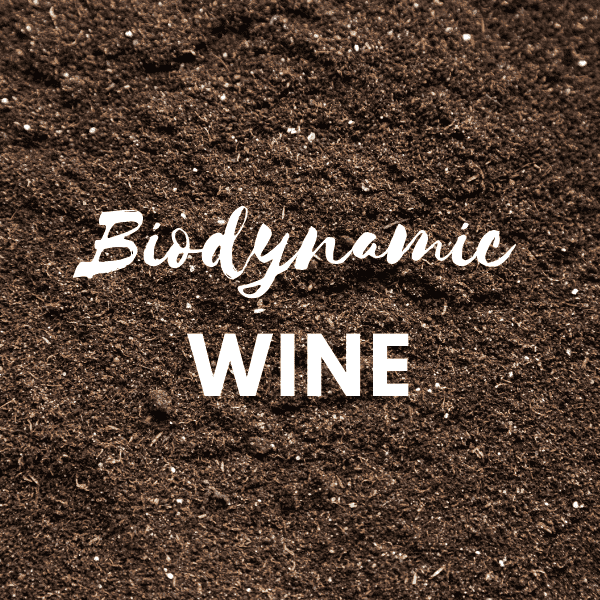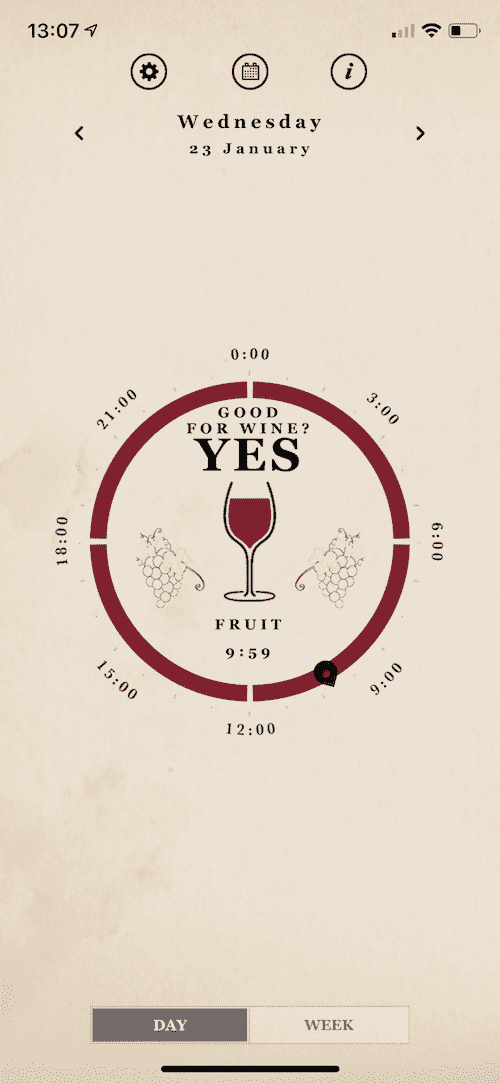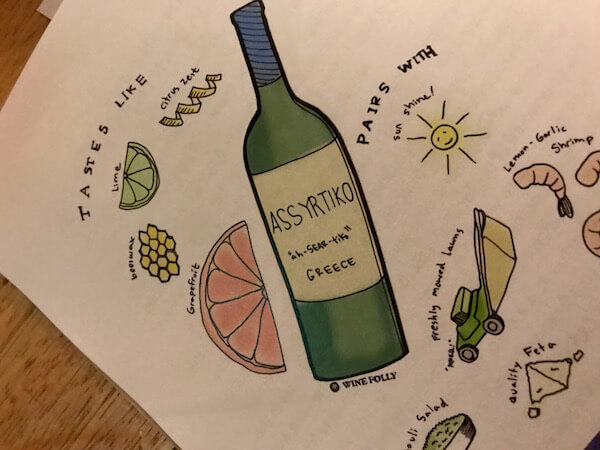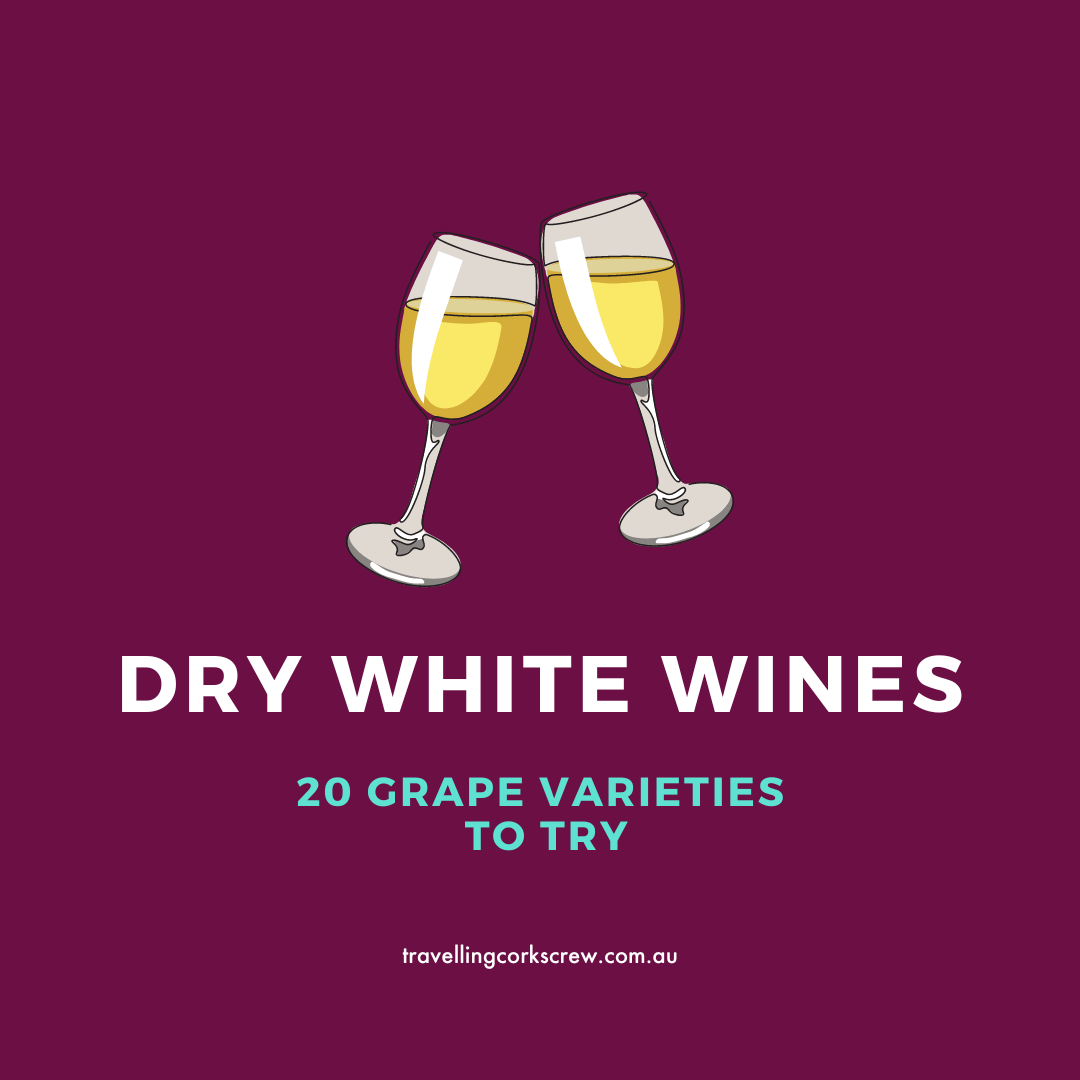Biodynamic Wine – Cow Horns & The Cosmos

If you follow the TC social channels then you may have seen me sparking up conversations on the topic. It’s a topic that people have positive and negative opinions about.
However, I also noticed that there’s a lot of misunderstanding about what exactly biodynamic wine farming is. When you see ‘biodynamic’ on a wine label, what does this mean to us everyday wine drinkers?
I don’t believe this is a discussion that should be focused solely on taste because like any wine or food/drink you consume – it’s subjective as we all have different taste buds.
Instead, I think it’s a discussion about why biodynamic wine grape growing is a thing and how us wine drinkers can understand it better.
To some, biodynamic wine sounds a bit ‘hippy’ as things like manure filled cows horns and the lunar calendar are involved.
However, from what I understand, at the essence of it, it’s all about creating wines that reflect the terroir of where they are grown and as a whole creating a healthy vineyard.
It’s taking from the earth and giving back to it.
What is biodynamic farming?
Biodynamic farming is not just for vineyards, you’ll also find produce and livestock produced by this type of farming.
It’s a type of holistic organic agriculture which was developed by an Austrian philosopher named Rudolf Steiner in 1924. In fact, biodynamic farming came before organic farming (by about 20 years) and is, therefore, the oldest non-chemical movement of farming in the world.
The official definition from the Biodynamic Farming and Gardening Association is “a spiritual-ethical-ecological approach to agriculture, gardens, food production and nutrition.”
Biodynamic vs. Organic farming
So we know the biodynamic farming movement is older than organic farming, but what exactly is the difference? Well firstly, yes they are both without chemicals and GMOs.
However biodynamic farming goes one step further and it looks at the entire lifeblood of a vineyard from all the plants, insects to the animals. It aims to create healthier plants, replenish the soil and add vitality.
Steiner believed that like the moon affects the tides, that it also affects the growing phases of planting and harvesting. Which is why biodynamic farming takes into account astrological influences.
I find it an intriguing topic and with more and more biodynamic wines popping up in Australia, I can’t help but drink up more on this topic.
Biodynamic wine production
The Biodynamic Agricultural Association of Australia was established in 1953. This association aims to ensure any products which claim to be biodynamic products on their labels are certified with an Australian or internationally recognised Biodynamic Certification, like that of Demeter.
NASAA, The National Association for Sustainable Agriculture is the other main body for biodynamic certification in Australia.
From my understanding, it’s quite expensive and takes time and effort to obtain biodynamic certification which has to be renewed regularly. Therefore you’ll find some Aussie wineries (especially the smaller producers) employ biodynamic practices however do not have the official certification.
The majority of biodynamic wine practices, tend to happen in the vineyard before the grapes make it to the winery for the winemaking stage of producing a wine. It’s in the winery where these grapes can be made into something you’ll love or don’t.
@ChildrenofGrape nailed it on the head on Twitter:
I find anyone who is devoted to #biodynamic is super connected to the land. Generally the grapes from these vine will be superior. Next is wine making from these grapes which can be hit or miss. I much prefer biodynamic over organic https://t.co/mpria0WpcD
— Children ofthe Grape (@ChildrenofGrape) January 26, 2019
Biodynamic viticulture is about creating a self-sustaining vineyard that has as little human interference as possible. This can include avoiding irrigation as well.
The biodynamic calendar
Then there’s the lunar calendar which serves as a basis for the biodynamic calendar which farmers stick to. Farmers use this calendar to plan when they plant, prune and harvest their grapes.
Biodynamic expert, Maria Thunn, created the biodynamic calendar based on 50 years of research. The calendar includes 4 different types of days:
- Fruit Days: are the best days for harvesting grapes
- Root Days: are the best days for pruning
- Flower Days: are the days not to do anything in the vineyard
- Leaf Days: are the best days for watering
Plus as briefly touched on already, no chemicals or additions like commercial yeast, acids, tannins etc are used in biodynamic wine. However, this doesn’t mean they’re sulfite free.
So where do cow horns come in?
Using cow horns is a biodynamic practice which revolves around adding compost to the vineyard. Giving back to the soil.
Cow horns will be filled with manure compost and buried in the ground throughout winter. It is typically done on the winter solstice. They will then be dug up post-winter and the compost is scattered throughout the vineyard.
So why do biodynamic farmers do this?
Well according to Biodynamie Services, this practice is called ‘Preparation 500’ and is essential to biodynamic farming. They say it:
is a powerful means for structuring the soil and stimulating soil microbial activity which regulates the pH, stimulates seed germination, and dissolves minerals.”
Do biodynamic wines taste better?
No. Well, let’s avoid arguments, and say it is subjective – like all wine.
Like organic wine or preservative free wine, biodynamic wine is a style of wine. I think even the best wine tasters in the world wouldn’t be able to pick a biodynamic wine blind. And to be honest, I think biodynamic wine producers are simply just passionate about making great wines, like any other producer.
I have heard people say that biodynamic wines have more vibrant flavours and age better, however, everyone to their own, wine is incredibly subjective.
Personally, I wouldn’t buy a biodynamic wine over a non-biodynamic wine because I believe it’ll taste better. I buy biodynamic wine because I’m interested in the vineyard practices and like any wine, I decide if I like it based on my experience with that wine.
If a winery chooses to go down the biodynamic route, you’ll most likely find out that this is because they are passionate about this farming practice and believe it’s improving the health of their vineyards and creates quality wines.
I really loved this comment on the TC Facebook page:
Australian biodynamic wines
Some of the Australian certified biodynamic wineries include:
- Cullen Wines, WA
- Robinvale Wines, VIC
- Castagna Vineyards, VIC
- Cobaw Ridge, VIC
- Goulburn Terrace Wines, VIC
- Hedonist Wines, SA
- Lark Hill Winery, NSW
- Maverick Wines, SA
- Avonmore Estate, VIC
- Pennyeight, VIC
- Hockkirch, VIC
- Ngeringa, SA
- Paxton Wines, SA
- Wirra Wirra Vineyards, SA
- Jean-Paul’s Vineyard, VIC
Also check out Vineful – Australia’s first ‘mindful’ wine service which focuses on biodynamic, organic, preservative free and vegan-friendly wines.
Alongside these, there are wineries who practice biodynamic methods but don’t hold a certification. You can find a list of wineries who may fall into this category on the Grenum website. As they put it:
These wines should not be discounted due to lack of an official certification. This is often a starting point for vineyards that will go on to become certified or simply a pragmatic choice for small producers due to cost constraints.”
I’ve had a few wines recently which are a product of biodynamic farming. You can click through to my tasting notes for each below. I will be updating this list as I consume more biodynamic wines.
- Ngeringa 2018 Uncultured Pét Nat
- Dormilona 2017 Blanco
- Ngeringa JE Pinot Noir 2016
- Freehand Wines 2017 Ruby Ruby Fortified Shiraz
In 2013, there were 700 vineyards certified as biodynamic in the world.
Drink wine on lunar calendar fruit days
As a little bit of fun, I want to end this post on how you can drink wine according to the biodynamic calendar too! I came across this drinking wine by the lunar calendar on Wine Folly when I was writing this post and found it rather interesting.
Basically, you want to avoid drinking wine on ‘root days’ and ‘leaf days’. You should drink aromatic whites on ‘flower days’ and the very best days to drink wine are ‘fruit days’.
Check out the Biodynamic Calendar for Australia here.
But wait, that’s not all! There’s also a biodynamic calendar for wine drinkers app called ‘When Wine Tastes Good’. The app can tell you in a matter of seconds what kind of day it is.
More biodynamic wine resources:
- http://www.crushedgrapechronicles.com/biodynamic-french-wines-winophiles/
- http://www.advinetures.ca/blog/biodynamic-vineyards-wine-purest-form/




Haha yes I agree, there seems to be too many ‘non-drinking’ wine days on that calendar! Thanks for leaving a comment David 🙂
Thanks for the feedback Robin and for the inspiration. It’s been great spending the time to really get to know the biodynamic wine side of things and I agree, you do have to get to know the smaller producers who practice biodynamic farming but may not be certified. Let me know what you think of the app!
I appreciate the biodynamic winemakers’ attention to the rhythm of things and the holistic approach. But I’m not adopting that biodynamic wine drinking calendar!
What a great piece! I have been lucky to have really great experience with Biodynamic wines, but I typically only find these at the winery. I do have issues with the certification, as I know so many small wineries that grow in this thoughtful way but don’t have the time or budget to jump through all the hoops. I suppose it’s all about knowing the grape grower and the wine maker and feeling comfortable with how they do things. I am curious about the calendar for tasting and need to put that to the test!
Thanks for stopping by the blog Allison and for the inspiration too. It was really great to spend some time really thinking about and connecting with this wine subject 🙂
Fantastic article Casey and thanks for including a link to ours! We are 100% on the same page as you and don’t necessarily choose biodynamic over non-biodynamic because we think it will taste better. Our experience (like yours) has been that the wines we’ve enjoyed that happen to be biodynamic all have a common denominator of a deep respect for Mother Nature and the land.